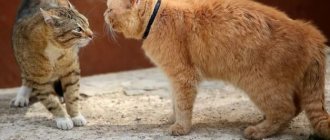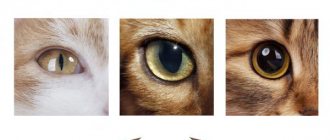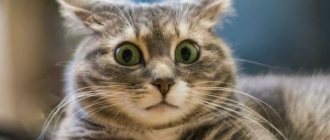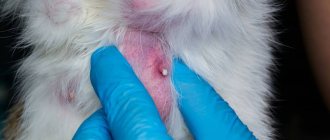Most often we pay attention to the eyes when we meet someone. It’s not for nothing that they are called the mirror of the soul. And, of course, we immediately notice their color. Unusual, bright shades of the iris always attract attention. We are used to the fact that the left and right eyes are the same color. But it happens that they are different, for example, brown and green.
Our iris has several primary colors: brown, gray, blue, blue, green, black, olive, amber (walnut). The most common eye color on earth is brown, since its carriers are representatives of two large races that make up the main population of the planet - Negroid and Mongoloid. The rarest color of the iris is green, found in only 2% of the world's inhabitants. There are also different variations, such as turquoise or emerald. But there is another rare category of people who have eyes of different colors. These can be the following options: blue and brown, green and gray and others. This anomaly is called heterochromia, and it occurs in only 1% of the population.
Features of heterochromia
Cat fans have different views on this phenomenon. Some people deliberately look for such a pet and consider it a symbol of good luck and prosperity. They are rightfully proud of their unique cat, groom and cherish it, providing ideal conditions so that the pet remains a reliable talisman for as long as possible.
There are reasons for this attitude towards animals with different eyes. Many nations have a belief that the presence of such a cat in the house guarantees protection and helps the owner achieve any goal. Followers of Islam know that the Prophet Muhammad loved his odd-eyed pet Muizza very much. There is also modern evidence in favor of cats with heterochromia. As soon as Bill Clinton had such an animal in his house, he soon managed to win the election and become president.
There are also people among cat lovers who consider odd-eyed pets to be representatives of evil spirits. During the Inquisition, women with heterochromia were called witches and burned at the stake. Many eastern fortune tellers and sorcerers get a cat with different eyes in order to enlist the help of otherworldly forces.
And yet there is no reason to consider a pet with different eyes a bad sign. It is better to get acquainted with the scientific explanations of heterochromia and treat this phenomenon adequately.
Mystical signs
Psychics agree that animals with different eyes are a talisman and bring good luck. Esotericists believe that such cats have pure energy and can act as family guardians and healers. In addition, it is believed that friendly relations are often established between the odd-eyed cat and the brownie.
If a cat gets in the way and doesn’t let you pass, then good luck awaits the owner.
Superstitions associated with odd-eyed cats:
- when a cat gets in the way and doesn’t allow you to pass, it means that the owner will soon be very lucky;
- if an animal disappears from home for several days and returns safely, the cat should be thanked, since its departure most likely diverted impending misfortune from its owners;
- if an odd-eyed cat crossed the road, then it is better to postpone your immediate plans to another day.
For your information! An interesting fact is that in the Middle Ages, when representatives of the cat family were considered accomplices of dark forces, cats with different eyes were treated much more loyally. Animals whose eyes were painted in different colors were perceived as nothing less than messengers of heaven.
No matter what people and signs say, in any case, an odd-eyed kitten in the house is a great joy for the owners. This wonderful animal will bring harmony to family relationships, and, most importantly, it can become a devoted pet and best friend.
Types of heterochromia
Experts distinguish several types of these anomalies. The criterion by which they are classified is the distribution of shades on the iris. Heterochromia can be:
- full,
- annular,
- sectoral.
In its full form, the anomaly appears as a uniformly colored iris. For the most part, one eye has a rich blue color, the other can be yellow, orange, green, copper, etc.
With ring heterochromia, both irises have the same shade. But on one of them there is a ring-shaped area, painted in a different color. A sectoral anomaly characterizes the presence of an area with a color that does not coincide with the general shade. This phenomenon can occur in one eye or both.
In most cases, a kitten is born with impaired pigmentation of the iris. Sometimes the anomaly is acquired; a change in the color of one eye is caused by certain external reasons. There are cat breeds in which heterochromia is a genetic trait.
Deafness of odd-eyed cats
White cat with blue eyes: examples of breed names
Cats with white fur and blue eyes often suffer from deafness, and they have hearing problems from the moment of birth. Pets with different colored eyes are also prone to deafness. Scientists cite genetic disorders as the cause of this phenomenon. In the body of every animal there are 2 genes - one maternal and the other paternal. Moreover, if a gene responsible for deafness is passed from mother to child, but it is not passed on from father, then the former acts as the dominant one, which affects the kitten’s hearing problems.
Deaf animals are born that way right away.
The animal's ears contain organs that convert sound into electrical impulses that directly interact with the brain. In cases of a genetic defect, the transforming organ fails within a week after birth. And since in healthy kittens the ear canal opens only 1-2 weeks after birth, an animal with this genetic defect will not be able to hear a single sound in its entire life.
For your information! This gene also affects the animal's eyes, as a result of which the cat begins to see worse at night, which makes it a less effective hunter. As with other deaf animals, cats are prone to accidents, raise their voices more often, and are more aggressive.
Reasons for the anomaly
A congenital anomaly is not a disease; the body of an odd-eyed cat functions in the same way as that of ordinary pets. There are no changes in visual acuity. The only disorder that in some cases may occur in animals with different eye colors is poor hearing or complete deafness. Therefore, breeders of purebred cats discard such kittens and do not use them for breeding.
Heterochromia can occur in animals of any color. But most often, an abundance or deficiency of pigments occurs in pets with white, light fur, and tricolor cats. Typically, pronounced differences in eye color appear by three months of age.
Acquired heterochromia is a consequence of the use of certain medications or indicates the presence of a disease. For example, in the treatment of glaucoma, eye drops are used, the components of which activate the production of melanin. As a result, the iris takes on a darker shade. Lightening is often a sign of diseases:
- leukemia,
- melanoma,
- uevita,
- diabetes,
- neuroblastoma, etc.
Acquired heterochromia should be the reason for a visit to the veterinarian and diagnostic testing.
What can heterochromia mean for eye health?
The amount of melanin in the iris, of course, cannot in any way affect the quality of vision. But there are cases when a change in pigmentation is caused by a disease, for example, Fuchs syndrome (which can lead to the development of cataracts or glaucoma), siderosis or chalcosis (copper salts entering the iris).
If you notice a change in its color, then this is a reason to consult a doctor to find out the reasons. This fact indicates that some kind of disturbance has occurred in the functioning of the body, and this is only an indicator. With congenital heterochromia, nothing threatens the eyes.
Different eye colors as a sign of breed
Different eye colors are not always an anomaly. There are cat breeds in which this trait is inherited and is considered one of the characteristic traits. These include:
- turkish angora,
- kao mani,
- Turkish van.
Representatives of these breeds have a snow-white color or white is the main color in them.
Various disasters and wars have put the Turkish Angora breed under threat of complete extinction. The disaster was prevented by the attention of the Turkish government to these animals. Now cats of this breed are under state protection and are a national treasure.
The most expensive and rare pet is the Kao Mani cat. Since time immemorial, these animals have lived in Thailand. Short-haired snow-white cats, like representatives of the Turkish Angora, are protected by the state and are considered the national breed of Thailand.
The Turkish Van breed is the result of selection. The ancestors of modern representatives were wild cats living on the shores of Lake Van. The main prey of these predators is fish. Each hair of the thick, semi-long coat is well lubricated with subcutaneous fat. The cat does not get wet during water hunting.
It was the Turkish Vans that made odd-eyed pets popular. In the Turkish city of Van, a monument was erected to an odd-eyed cat. One eye represents the sun, has a golden tint, the second symbolizes the sky, its color is blue.
Heterochromia in animals of these breeds manifests itself similarly. One eye has a deep blue tint. The color of another iris can be amber, honey, green, orange.
Legend why huskies have different eyes
Among the northern peoples, odd-eyed dogs are valued and revered as mystical creatures. There is a beautiful legend explaining their origin. She says that a long time ago the huskies saw the majestic icy ocean and were fascinated. Cold beauty not only took possession of the heart and soul of the animal, but also its gaze forever acquired a bluish-icy hue.
Other dogs met people and lived near them. Warming themselves near the fire, the animals admired the bright and hot flames and filled their hearts with warmth. This is how the brown-eyed Hasyats appeared.
From the union of two dogs, odd-eyed offspring were born, incorporating the cold fearlessness and warm kindness of their ancestors.
Heterochromia in other breeds
As an anomaly, different eye colors can appear in animals of different breeds. This phenomenon is often observed in cats:
- marble and tortoiseshell color,
- Persian,
- exotics,
- sphinxes,
- oriental,
- British, British
- Scottish,
- rex.
You can see odd-eyed cats among the yard tricolors. In most cases, different shades of the iris are formed in animals whose color white occupies more than half of the body area.
The manifestation of this feature is unpredictable and can occur in cats of any breed. There is only one condition for the formation of different colors of the iris. The animal must have a white gene that is inherited.
Huskies with different eyes - is it normal or a defect?
Odd-eyed huskies are not a defect of the breed, but a normal phenomenon if the color changes in the first year of the dog’s life. In the case when a change in shade occurs later, at an older age, this becomes a symptom of the disease.
According to international standards, the eyes of a purebred husky are brown, blue, other shades and multi-colored are acceptable.
Khasenys with different eyes are born to brown-eyed and blue-eyed parents, or to dogs with the same iris, but prone to heterochromia. Its sectoral appearance, in which we can distinguish a non-uniform color of the eye, is the norm provided for by the standard.
Are there such representatives among other breeds or outbreds?
Scottish Fold Cat
In the listed breeds, heterochromia is more common, but in other animals the appearance of this feature is also possible. Kittens with different colored eyes are found among:
- Scots;
- British Shorthair;
- Canadian sphinxes;
- Maine Coons;
- Persian cats.
Even a mongrel pet may have different eyes; they will be caused by a genetic mutation or changes that have occurred during life. From an esoteric point of view, such cats are considered carriers of pure energy and good luck, and therefore are highly valued.
How do eyes change after birth?
Immediately after birth, Khasen puppies are blue-eyed, puppies begin to see sight on days 18-20, and the retina is formed on days 21-22. From the third week, the color remains the same or gradually changes. Only by six months does it become clear what color the iris acquires. If at this point it is still cloudy, swelling or swelling is observed, contact a veterinary clinic.
If a puppy has an ultramarine look at a month old, then in an adult dog it will take on a blue and icy tint. Light blue with a slight greenish tint later becoming amber or green. Cloudy cornflower blues gradually turn into brown ones.
If the baby has differences in the shade of his irises, there is a high chance that he will grow up to be a harlequin. Sectoral heterochromia in odd-eyed husky puppies can be diagnosed no earlier than one and a half months. The feature appears as a small speck of brown, black, blue or green on the iris. Dark marks are much easier to notice than light ones.
Interesting facts about heterochromacy
In dogs, heterochromacy is most common in the Husky breed.
People are less likely to have different eyes, but, for example, David Bowie had one brown eye and the other blue.
People with heterochromic eyes often have vision problems.
The most beautiful cat in the world in 2022 was proclaimed the Turkish kitten Alosha - a snow-white baby with bright green and blue eyes with a slight braid. The pet is absolutely healthy and hears perfectly in both ears.
In the city of Van (Turkey), a monument to a heterochromic cat was erected, whose blue eye represents the sky and whose golden eye represents the sun.
There is a biblical legend about the odd-eyed Turkish Van. The cat caught a mouse that was destroying supplies on the ark, and Noah stroked his head in gratitude, which is why representatives of this breed have gold spots between their ears.
According to surviving myths, the favorite cat of the Prophet Muhammad, named Muizza, also had multi-colored eyes.
Save and increase
For a hundred years now, the Ankara Zoo has been running a program to breed white Angora cats with different or blue eyes.
At the beginning of the last century, unusual Angora cats found themselves in danger of extinction: the gene for long hair was actively used in the development of new breeds, and there were catastrophically few purebred Angoras left. In 1917, Turkey decided to preserve the breed as a national treasure, and for some time local animals were even prohibited from being exported abroad.
Now other white cats with different-colored eyes are bred in the world - and the British Shorthair breed is not lagging behind in this. For example, a nursery for odd-eyed Britons operates in Rotterdam.
Strange eyes and deafness
Deafness in white cats appears to be associated with the white spot gene and the dominant white gene. It is more common in cats with blue eyes or heterochromia. As experts explain, this is due to the fact that the white gene can sometimes cause degradation of the cochlea without disrupting the migration of melanocytes into one or both eyes. The cochlea is the part of the inner ear involved in hearing. This results in permanent deafness in one or both ears.
Multi-colored eyes can be found in completely different breeds. Heterochromia is a normal deviation because such cats are no different from the rest. If your cat with multi-colored eyes is deaf, with proper maintenance and care she will give you the same love and devotion as ordinary cats.











